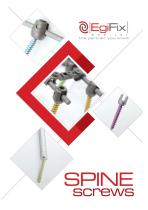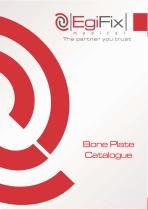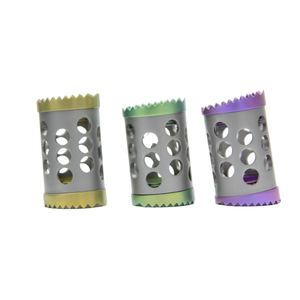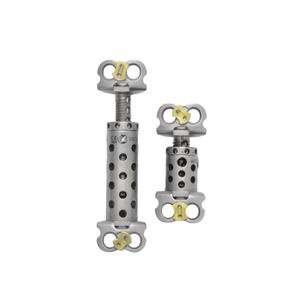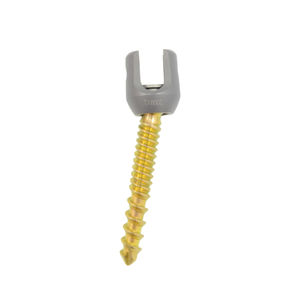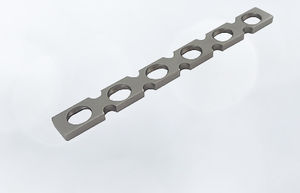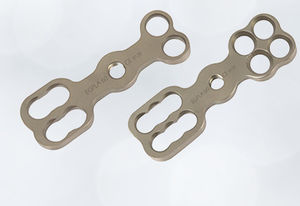
Polyaxial pedicle screw Percutaneoustitanium
Add to favorites
Compare this product
Characteristics
- Screw features
- polyaxial
- Materials
- titanium
Description
Unified Screw Design: Functions as a single unit to provide robust support, minimizing complications associated with connector systems.
Long Serration: Facilitates early locking of the nut for enhanced stability.
Long Segment Fixation: Capable of stabilizing long segments effectively.
Low Profile: Designed to minimize protrusion when cut, reducing tissue irritation.
Buttress Thread Design: Clinically proven locking mechanism for reliable fixation.
Self-Tapping Screws: Simplifies insertion and enhances surgical efficiency.
Color-Coded Screws: Easy identification for efficient surgical planning.
Rods: Pre-lordosed bullet-nosed rods of 5.5mm in diameter, with lengths from 40mm to 200mm in 5mm increments.
User-Friendly Instruments: Designed for optimal performance and ease of use for surgeons.
Advantages of Minimal Invasive Techniques
Reduced Risk of Soft-Tissue Injury: Minimizes iatrogenic damage associated with traditional spinal exposure.
Lower Blood Loss: Decreases intra-operative blood loss and risk of transfusion.
Shorter Hospital Stay: Promotes quicker recovery and reduces length of stay.
Less Post-Operative Pain: Lowers requirements for analgesia, enhancing comfort.
Faster Return to Work: Supports quicker rehabilitation.
Preservation of Muscle Integrity: Avoids dissection of paraspinal muscles, reducing the risk of muscular denervation and ischemia.
Catalogs
Egifix Spine Screws Catalogues
44 Pages
Egifix Bone Plates Catalogue
64 Pages
Related Searches
- Bone plate
- Compression plate
- Metallic compression plate
- Locking compression plate
- Titanium compression plate
- Distal compression plate
- Compression bone screw
- Interbody fusion cage
- Metallic compression bone screw
- Proximal compression plate
- Forearm compression plate
- Mid-shaft compression plate
- Arthrodesis nail
- Lateral compression plate
- Tibia compression plate
- General purpose compression bone screw
- PEEK interbody fusion cage
- Femoral stem
- Humeral compression plate
- Metallic intramedullary nail
*Prices are pre-tax. They exclude delivery charges and customs duties and do not include additional charges for installation or activation options. Prices are indicative only and may vary by country, with changes to the cost of raw materials and exchange rates.


